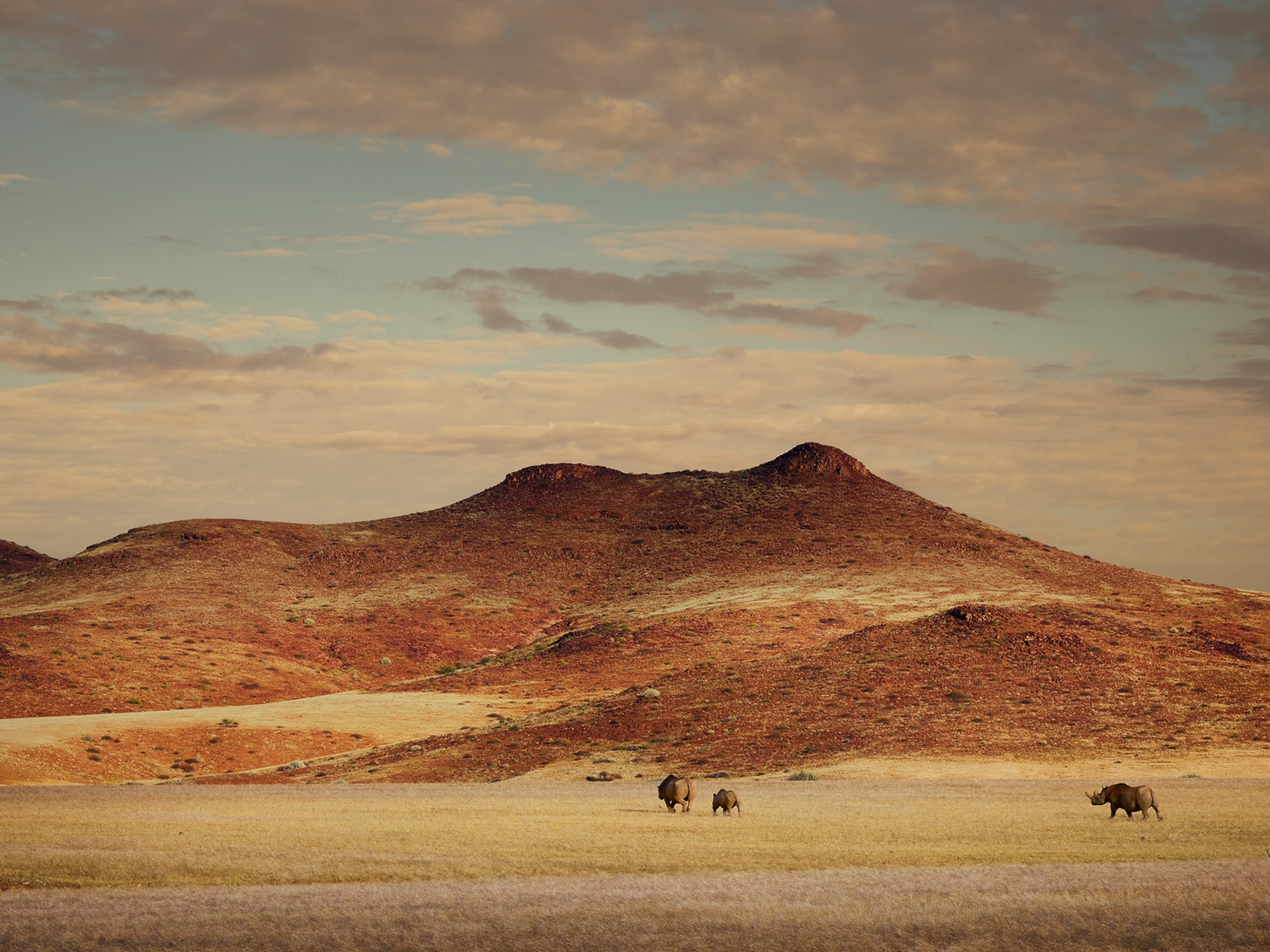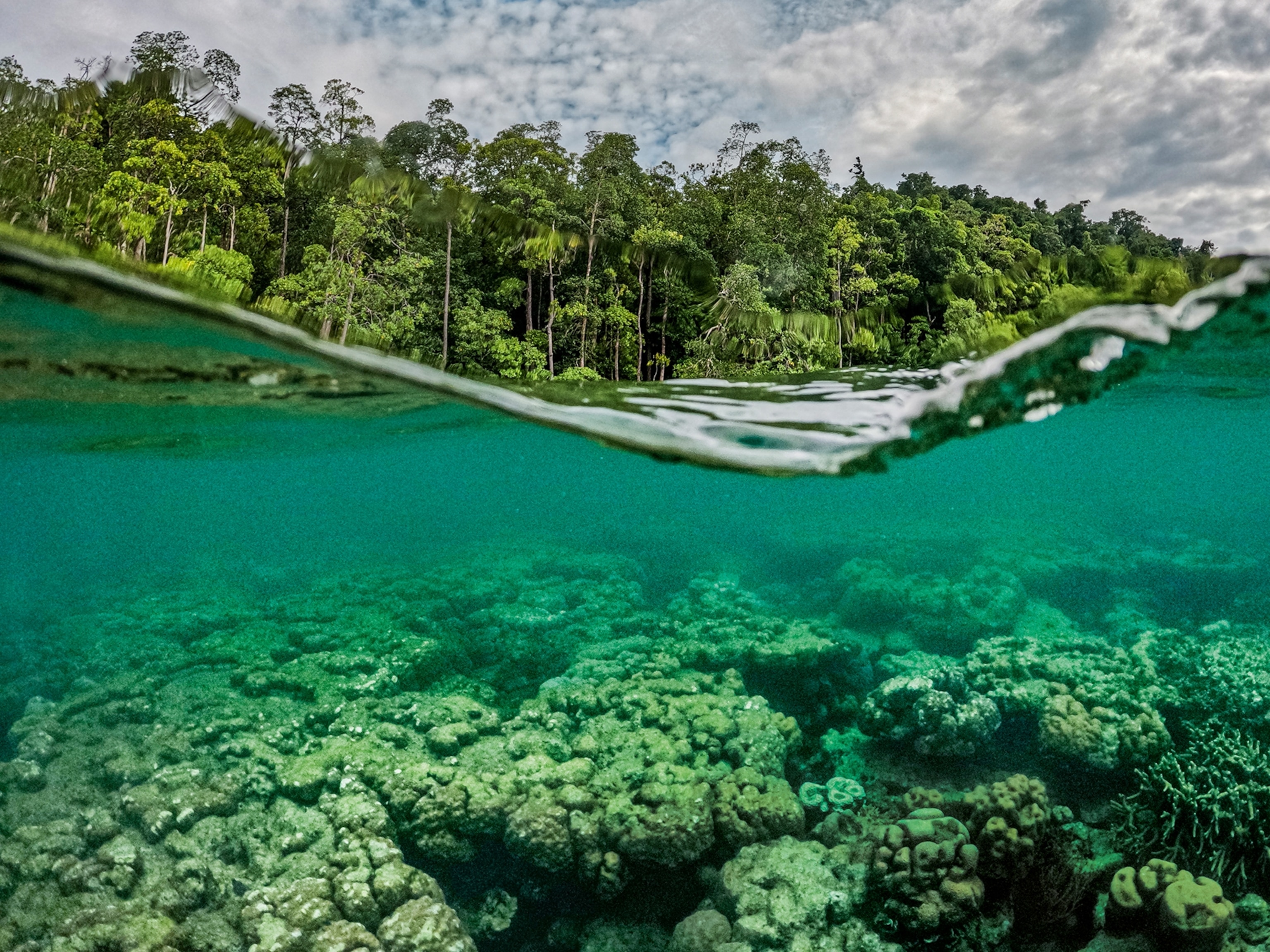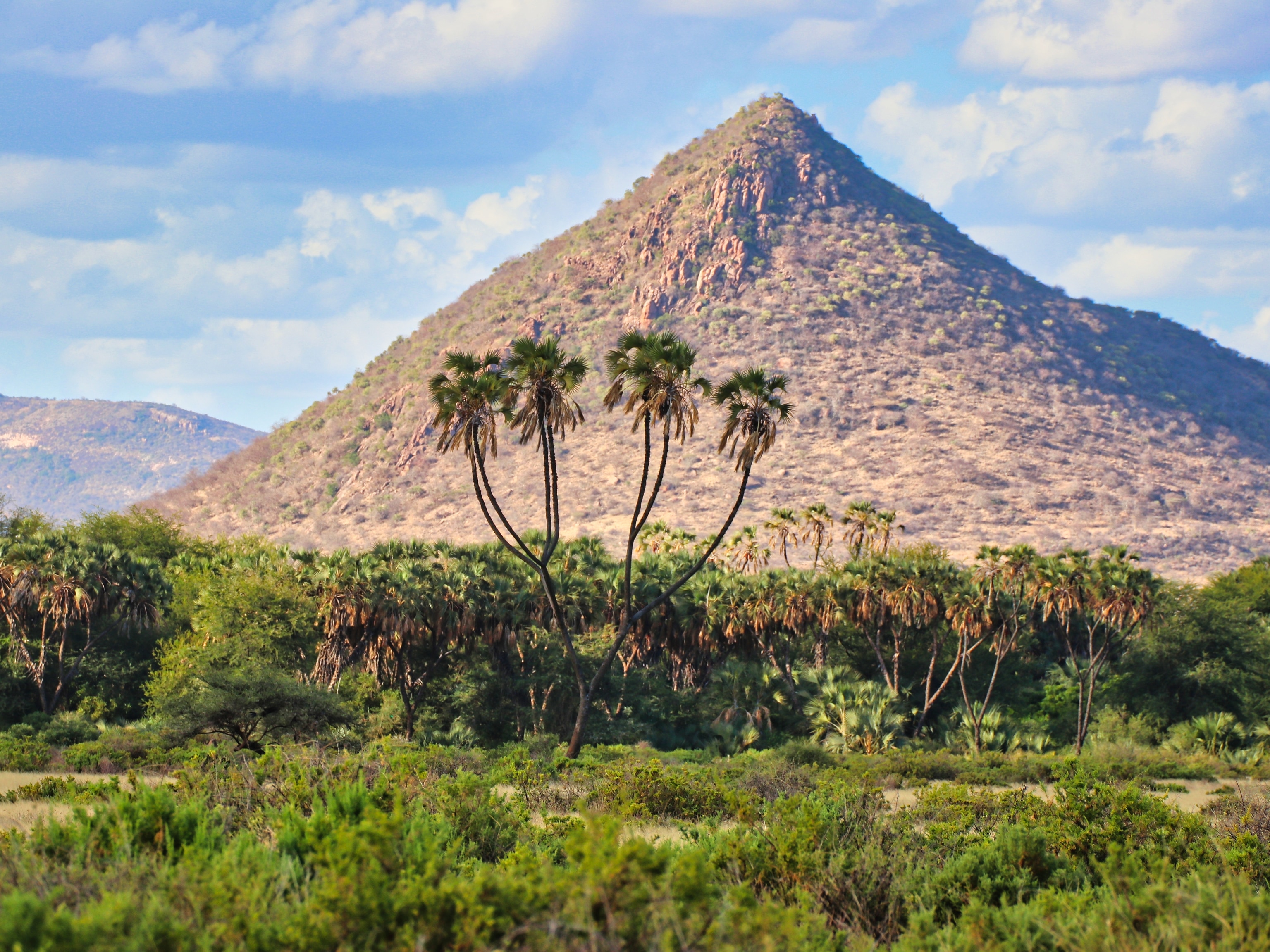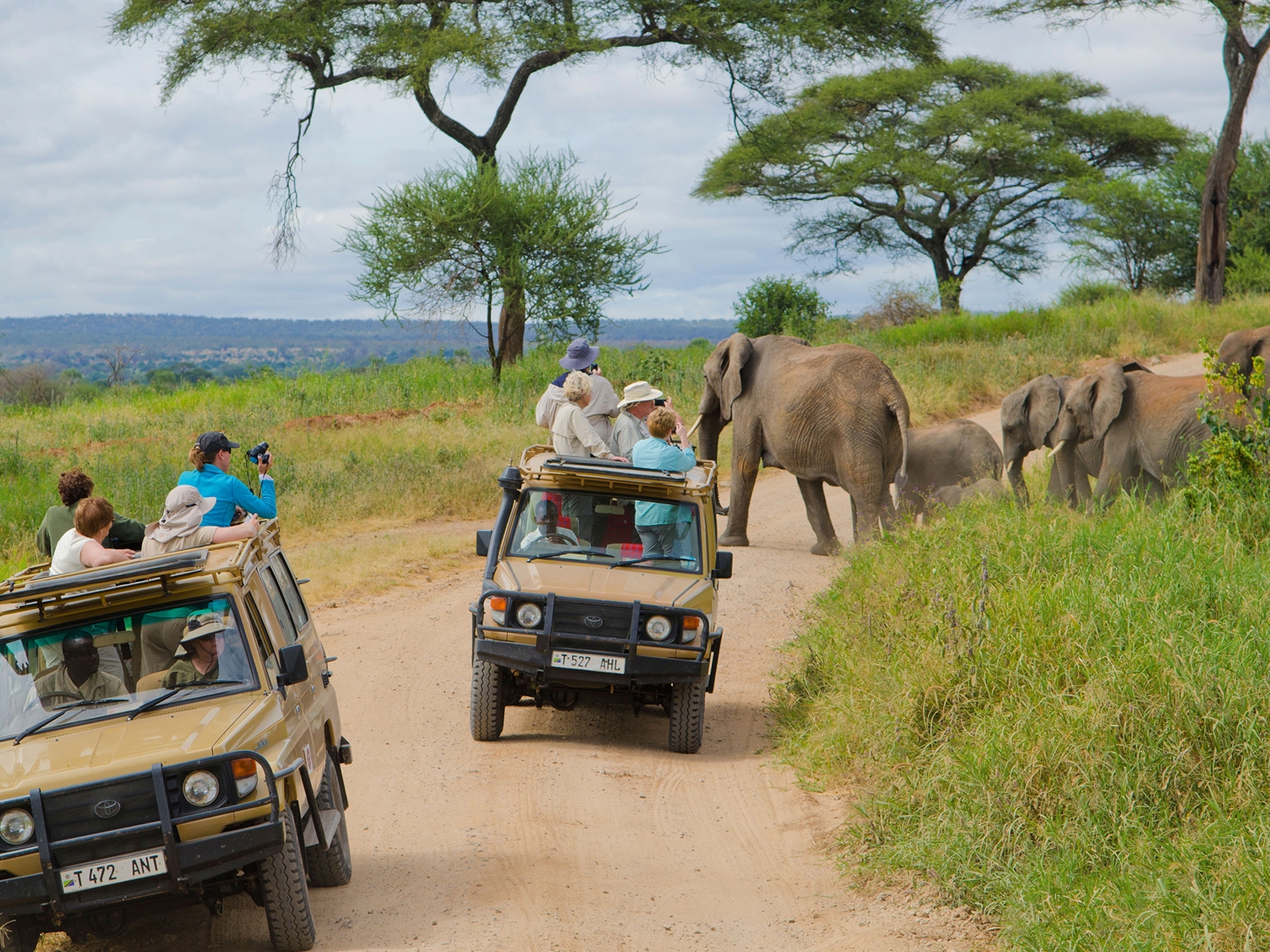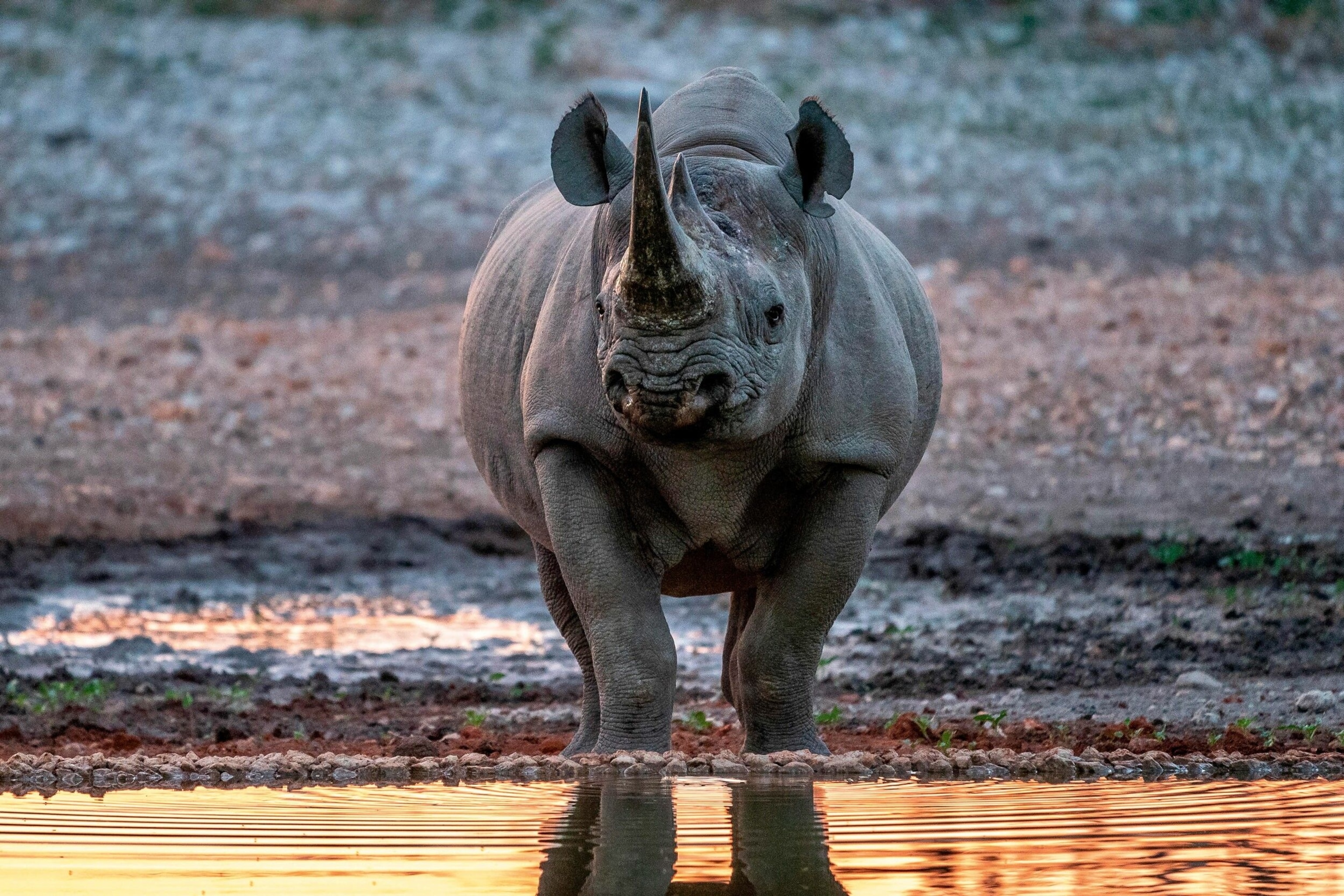
Learning to protect Namibia's endangered rhinos on a new conservation bootcamp
Responding to travellers’ desire to engage with frontline conservation, the Naankuse Foundation, based east of Windhoek, has opened its ranger training programmes to anyone willing to muck in on patrols and under-the-stars night shifts in the bush.
Forget tents, forget torches. This is camping with a difference. Around me, my boma — a metre-high ring of thorny bushes — provides shelter from any predators. Above me, a sky flooded with stars threatens to distract me from the job at hand. You may think that here, buried in 22,000 acres of Namibian bushland, I’d be on the lookout for megafauna: the leopards that roam the reserve, or the elephants that could mercilessly trample my makeshift camp. But I’m here with a different role, taking on a nighttime stint as a ‘Rhino Ranger’ with one task: to protect the world’s rapidly depleting rhino population from poachers.
While ranger training academies exist across the world for those seeking a career in conservation, this is the first time such a programme has been offered to everyday travellers, who can join for one-week to one-month stints to take on a vital wildlife protection role and work alongside some of the most inspirational people on the planet.
Their office? The Zannier Reserve, a huge expanse of land run by the Naankuse Foundation, which rescues and rehabilitates animals in danger. A pair of elephants rescued from being sold to a circus and hundreds of baboons are just some of the lucky guests.
The other residents are a small crash of rhinos — a fraction of the 27,000 left in the wild — who are at risk from poachers. In 2019, 41 desert-adapted black rhinos were killed in Namibia alone. The poacher’s target is rhino horn, which is regarded as a wonder-cure by thousands of consumers in China. A horn can weigh up to 8kg, with each kilo valued at a figure between £20,000 to £75,000. Simple sums show why the animals are in demand.
While donations to anti-poaching units are important, there’s another key to success. “Boots on the ground,” says Ivan, the reserve manager. “More eyes, more ears. Greater deterrents.” And that’s where visitors can help.
For the next few days, I’ll be supporting my teammates H and J, patrolling the bushland and looking for signs of poachers. “A ranger’s role is not to confront poachers, but to report on them,” says Ivan. “We’re conservationists — the aim is to drive them into an ambush and catch them, not to kill anyone.”
Rhino poachers aren’t opportunists. In fact, they run a highly skilled, planned operation that’s likened to human and drug trafficking. Due to this, H and J live highly secretive lives, with only close family knowing their real jobs. If their identities are revealed, they become an immediate target: poachers have blackmailed rangers and kidnapped their families for intelligence on rhino locations.
Nevertheless, our days feel strangely relaxing. This is a controlled and considered undertaking. Kitted out in our uniforms, we spend the mornings patrolling in single file. H and J are armed with rifles, taking up the front and rear, while I scour the land for any signs of unusual human activity: a lone cigarette butt, a footprint or even a cache of weapons.
After each patrol, we scoff our rations (biscuits, noodles and tinned meat) and call in our sightings on a walkie talkie, reporting any suspicious sightings and the locations of animals. The experience is in one part ranger patrol and another part thrilling walking safari. Every day — indeed, every hour — we encounter memorable wildlife tableaus: a leopard snoozing in the sunshine; a giraffe towering over flowering bushes; a cobra occupying a patch of bush worryingly close to our camp.
And, of course, the rhino. Our first sighting is a mother and daughter barely 60ft away. “Respect the animals and they’ll respect you,” H tells me in a whisper. “Don’t show fear — it will make them fearful too.” They gaze at us inquisitively before sauntering past, unfazed.
The next day we see them again, this time with a handful of others. They stroll into a sun-soaked stretch of grass and graze for hours, finally wandering off as the sun sets.

That night, back in the boma, I think about the rhino I’ve had the privilege to help protect, and my new ranger friends working the frontline of this operation. Their jobs offer no glory; I can’t even share their real names or their faces. I think back to H smiling as he watched the rhino happily grazing at the waterhole earlier that day. “This job is dangerous,” he’d told me in a whisper. “But I must help save these amazing animals.” I’m glad to have played a small part, too.
How to do it: The Naankuse Foundation’s Rhino Rangers programme starts at £91 per person per night. naankusefoundation.com
Published in the March 2021 issue of National Geographic Traveller (UK)
Subscribe to our newsletter and follow us on social media:

